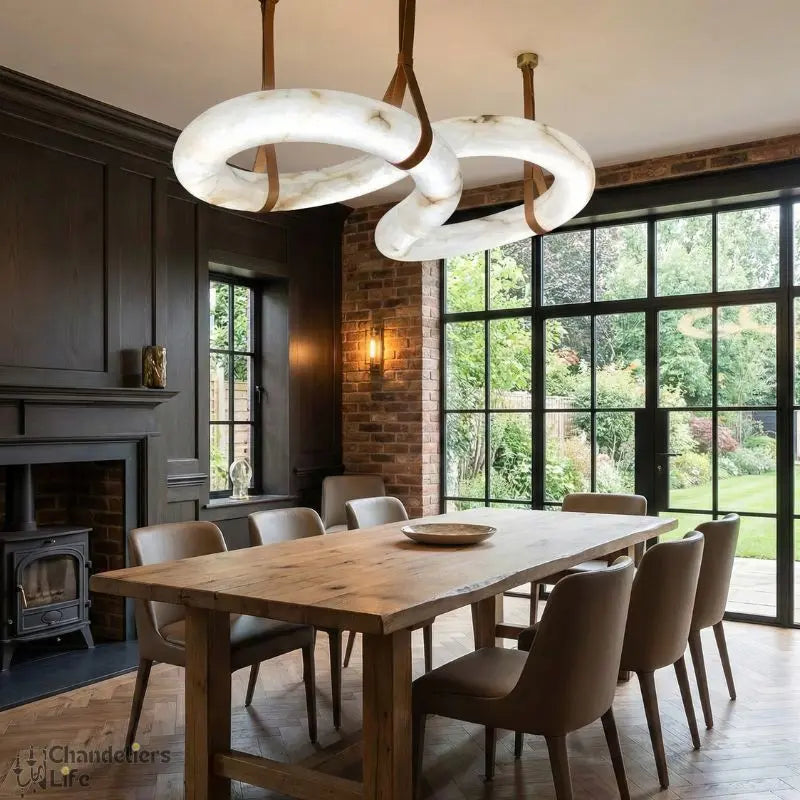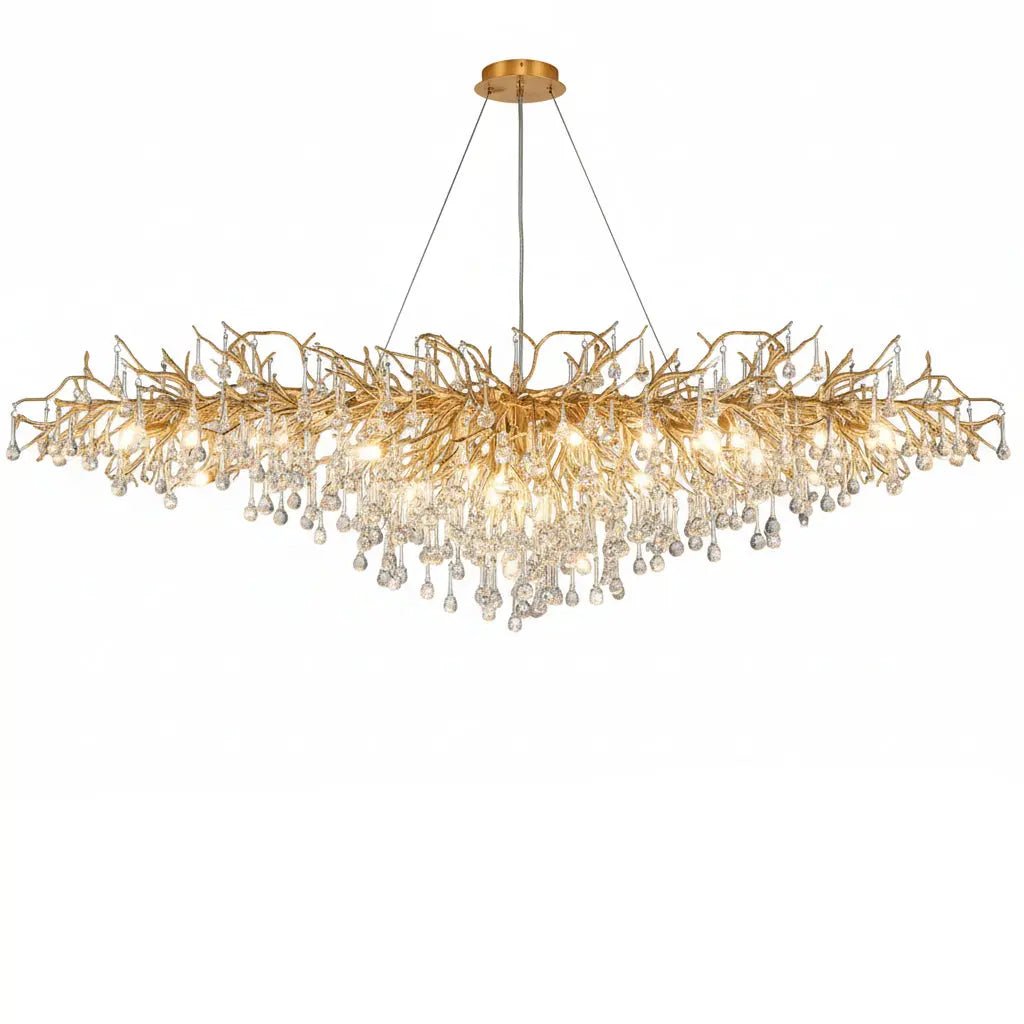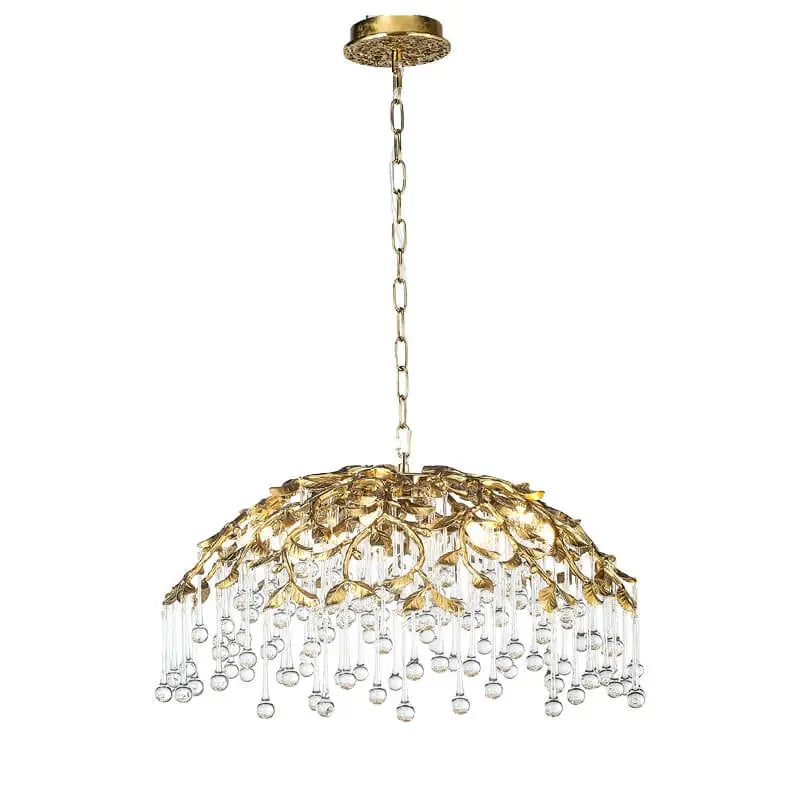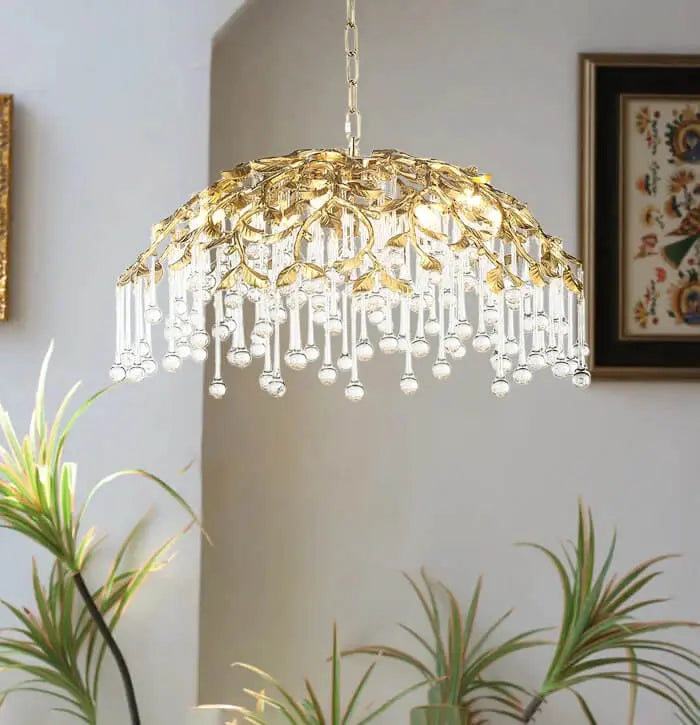Lighting is more than just a way to brighten up your retail space. It sets the mood, highlights your products, and guides your customers through your store. Good lighting can make a big difference in how shoppers feel and behave, and can even boost your sales. This guide will show you how to use lighting effectively in your store.
Key Takeaways
- Use different types of lights to create a visual hierarchy and guide customers' eyes around the store.
- Backlighting can highlight products and add depth to your displays.
- Window treatments can enhance natural lighting and help set the mood in your store.
- Choose the right lighting fixtures like ceiling lights, wall sconces, and track lights for different effects.
- Optimize brightness and color temperature to match your store's ambiance and highlight your merchandise.
Creating a Visual Hierarchy with Shop Lighting
Using Different Types of Lights
Creating a visual hierarchy in your store starts with using different types of lights. Mixing ambient, task, and accent lighting can help guide customers' eyes around the store. Ambient lighting provides general illumination, while task lighting focuses on specific areas like checkout counters or fitting rooms. Accent lighting, on the other hand, highlights key products or displays, making them stand out.
Guiding Customers' Eyes
The way you position your lights can guide customers' eyes to different parts of the store. For example, placing brighter lights on new arrivals or special promotions can draw attention to these areas. Adjustable recessed lights or track lighting can be particularly effective for this purpose, as they allow you to change the focus as needed.
Highlighting Key Areas
Highlighting key areas in your store is essential for creating a visual hierarchy. Use accent lighting to draw attention to featured products, special promotions, or unique architectural features. This not only makes these areas more noticeable but also enhances the overall shopping experience. By strategically placing lights, you can create a path for customers to follow, ensuring they see the most important parts of your store.
Enhancing Product Displays with Backlighting
Creating Depth
Backlighting can add depth to your product displays, making them more visually appealing. By placing lights behind the products, you create a halo effect that draws attention and makes the items stand out. This technique is especially useful for highlighting textures and details that might otherwise go unnoticed.
Highlighting Products
To effectively highlight products, use a combination of backlighting and other lighting techniques. For instance, you can use directed spotlights to create depth and texture. This not only makes the products more attractive but also guides the customers' eyes to key areas. Remember to avoid veiling reflections by angling the lights properly.
Techniques for Effective Backlighting
- Use Frosted Glass Fixtures: These diffuse the light and create a warm, inviting atmosphere.
- Track Lighting: Ideal for highlighting product features and creating visual interest in small areas.
- Recessed Lights: Place these around displays to draw attention without being too overpowering.
- Accent Lighting: Directional spotlights can emphasize the texture in textiles and other materials.
- Uplights: Provide soft, indirect lighting and create a warm ambiance throughout the space.
Backlighting is a powerful tool in retail lighting. It not only enhances the visual appeal of products but also helps in creating a captivating shopping experience.
By implementing these techniques, you can make your product displays more engaging and effective. Whether you're showcasing DIY wall decor for bedroom or high-end fashion items, the right backlighting can make all the difference.
Maximizing Natural Light with Window Treatments
Enhancing Natural Lighting
To brighten up your space, consider using light-colored window treatments. These allow more sunlight to filter through, creating a warm and inviting atmosphere. Sheer curtains or blinds can be particularly effective in a minimalist living room decor, as they provide privacy without blocking too much light.
Setting the Mood
The right window treatments can help set the mood in your store. For a cozy, boho bedroom decor, opt for heavier fabrics in warm tones. On the other hand, for a Scandinavian home decor inspiration, choose simple, clean lines and neutral colors. This will create a calm and serene environment.
Types of Window Treatments
There are various types of window treatments to choose from, each with its own benefits:
- Sheer Curtains: Allow maximum light while providing some privacy.
- Blinds: Offer adjustable light control and come in various materials and styles.
- Shades: Available in different opacities, from light-filtering to blackout.
- Shutters: Provide excellent light control and add a classic touch to your decor.
Using the right window treatments can transform your store, making it more inviting and enhancing the overall shopping experience.
Whether you're looking for apartment balcony decor ideas or wondering how to decorate a small dining room, the right window treatments can make a significant difference.
Choosing the Right Lighting Fixtures
Selecting the right lighting fixtures is crucial for creating an inviting and effective retail space. The right fixtures not only enhance the look of your store but also highlight your products in the best possible way. Here are some tips on choosing the right lighting fixtures for your retail space.
Ceiling Lights for Even Illumination
Ceiling lights are essential for providing even illumination across your store. They help eliminate shadows and ensure that every corner of your space is well-lit. There are various types of ceiling lights to choose from, including recessed lights, pendant lights, and flush mounts. Recessed lights are great for a clean, modern look, while pendant lights can add a touch of style and elegance. Flush mounts are ideal for stores with low ceilings.
Wall Sconces for Contrast
Wall sconces are perfect for adding contrast and depth to your retail space. They can be used to highlight specific areas or create a cozy ambiance. Wall sconces come in various styles, from modern to vintage, making them a versatile choice for any store. They are also great for adding a touch of personality to your space.
Track Lights for Versatility
Track lights are incredibly versatile and can be adjusted to focus on different areas of your store. They are perfect for highlighting key products or creating focal points. Track lights can be easily moved and adjusted, making them a flexible option for any retail space. They are also available in various styles and finishes, allowing you to choose the perfect look for your store.
Optimizing Brightness and Color Temperature
Complementing Store Ambiance
The right brightness and color temperature can make or break the ambiance of your store. Warm white light ranging from 2700K to 3500K is ideal for boutiques with wood and fabric elements, while cool white light around 5000K makes metals and gems sparkle in jewelry stores. Aim for consistent color temperatures to avoid clashing tones. If you need to vary the temperature, do so gradually and with purpose, such as shifting from warm in a home décor section to cooler in a tool department.
Choosing the Right Brightness
Brightness is measured in lumens, and the amount you need depends on your store's layout and purpose. For ambient lighting, aim for at least 20 lumens per square foot. Higher traffic areas like entrances, dressing rooms, and checkouts may need 50 lumens or more per square foot. Brighter light is ideal for illuminating darker products like clothing and accessories, while lower lumen levels create a cozier, more relaxed environment. Adjust brightness levels intentionally to accent or dim specific areas as needed.
Selecting the Appropriate Color Temperature
Color temperature, measured in Kelvins (K), affects how customers perceive your products. Most retail applications benefit from a neutral color temperature of 3000-3500K, but choosing 4000K-5000K sources can create a higher-energy environment or make certain colors pop. For a more natural lighting effect, consider installing 4000-4500K bulbs, especially in dressing rooms and grocery stores. Jewelry stores can use bright light bulbs up to 5000K, resulting in a bluish white color. Generally, the higher the color rendering index (CRI) of a light source, the truer or more natural the product’s color appears under that light. A CRI of 95+ is typically suitable for retail applications.
Implementing Retail Lighting Best Practices
Creating a Visual Hierarchy
To make your store more engaging, create a visual hierarchy using different types of lights. This helps guide customers' eyes around the store. Use accent lighting to highlight key products and areas, making them stand out. A good rule of thumb is to aim for a contrast ratio of 3:1 or greater between general and accent lighting.
Using Backlighting Effectively
Backlighting can add depth and dimension to your displays. It helps in highlighting products and making them more appealing. Ensure that the backlighting is not too harsh, as it can wash out the products. Instead, use softer lights to create a balanced look.
Utilizing Window Treatments
Window treatments can maximize natural light and set the mood in your store. Use sheer curtains or blinds to control the amount of sunlight entering the space. This not only enhances the natural lighting but also helps in creating a warm and inviting atmosphere.
Proper lighting can make a significant difference in how customers perceive your store. By implementing these best practices, you can create a more inviting and visually appealing retail space.
Planning Your Store Lighting Layout
Planning your store lighting layout is crucial for creating an inviting and functional retail space. A well-thought-out lighting plan can enhance the shopping experience and boost sales. Here are some key steps to consider:
Compliance with Regulations
Before you start, make sure your lighting plan complies with local regulations like ADA and IECC. This ensures safety and accessibility for all customers.
Measuring and Assessing the Space
Measure your retail space to determine the number of lights needed. Assess the layout to identify areas that require more illumination, such as product displays and checkout counters.
Laying Out Fixtures and Choosing Bulbs
- Ceiling Lights: Provide even illumination and are ideal for general lighting.
- Wall Sconces: Add contrast and are perfect for highlighting specific areas.
- Track Lights: Offer versatility and are great for accentuating featured products.
When choosing bulbs, consider the brightness and color temperature to complement your store's ambiance. Warmer tones create a cozy atmosphere, while cooler tones make the space feel vibrant.
Thoughtful placement of lighting fixtures can eliminate shadows and guide customers seamlessly through the store. This is especially important for small apartment decor ideas and boho chic home decor, where lighting can make a big difference in a compact space.
By following these steps, you can create a well-lit, welcoming environment that enhances your merchandise and improves the overall shopping experience.
When planning your store's lighting layout, it's important to think about both function and style. The right lighting can make your products shine and create a welcoming atmosphere for your customers. For more tips and a wide selection of lighting options, visit our website today!
Conclusion
Lighting is a key part of making your retail store inviting and boosting sales. By using the right lighting techniques, you can highlight your products and create a great shopping experience for your customers. Remember to mix different types of lights to guide your customers' eyes and make your store look its best. With these tips, you can light up your retail space and see your sales grow!
Frequently Asked Questions
How can I create a visual hierarchy with shop lighting?
You can create a visual hierarchy by using different types of lights to guide customers' eyes around the store. Highlight key areas and products to draw attention.
What is the benefit of backlighting in retail spaces?
Backlighting helps to highlight products and create depth, making displays more attractive and engaging for customers.
How can I maximize natural light in my store?
Use window treatments to enhance natural lighting. This not only saves energy but also creates a pleasant shopping atmosphere.
What type of lighting fixtures should I use for my retail store?
Ceiling lights provide even illumination, wall sconces create contrast, and track lights offer versatility. Choose fixtures based on your store's layout and needs.
Why is brightness and color temperature important in retail lighting?
Brightness and color temperature affect the store's ambiance and how products are perceived. Choose the right levels to complement your store's atmosphere and merchandise.
What are some best practices for retail lighting?
Create a visual hierarchy, use backlighting effectively, and utilize window treatments. Plan your lighting layout to comply with regulations and enhance the shopping experience.









































